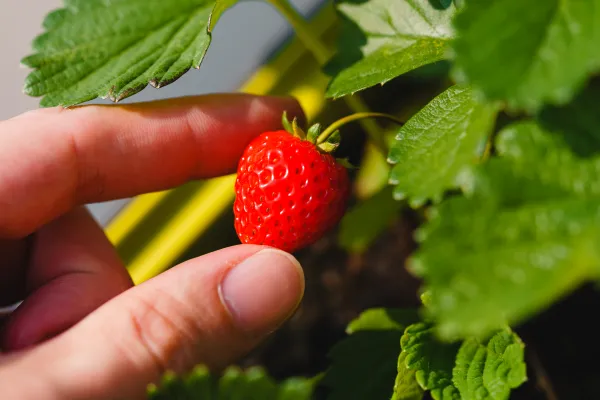Rooftop gardening is a delightful way to make use of urban spaces, bringing greenery and fresh produce to otherwise unused areas. Strawberries, with their sweet, juicy berries and beautiful foliage, are an excellent choice for rooftop gardens. They are relatively easy to grow and can be cultivated in containers, making them ideal for small spaces. Here’s a step-by-step guide to help you grow strawberries on your rooftop.
1. Planning Your Rooftop Strawberry Garden
Assessing the Space
Before you start, assess your rooftop for its suitability:
- Weight Capacity: Ensure the roof can support the weight of soil, plants, and containers.
- Sunlight: Strawberries need at least 6-8 hours of sunlight daily. Check for sun exposure and potential shade from nearby buildings.
- Wind Protection: Rooftops can be windy, which can damage plants. Plan for windbreaks using screens or strategically placed taller plants.
Choosing the Right Containers
- Size: Use containers that are at least 12 inches in diameter and 10 inches deep.
- Material: Opt for lightweight materials like plastic or fabric pots to avoid overloading the roof.
- Drainage: Ensure containers have good drainage to prevent waterlogging.

2. Selecting Strawberry Varieties
Choose strawberry varieties based on your climate and desired harvest time:
- June-bearing: Produce a large, concentrated crop in early summer.
- Ever-bearing: Yield two main crops, one in spring and another in late summer.
- Day-neutral: Produce berries throughout the growing season.
3. Preparing the Soil
Strawberries thrive in well-draining, fertile soil:
- Soil Mix: Use a mix of potting soil, compost, and perlite or vermiculite for drainage.
- pH Level: Maintain a soil pH between 5.5 and 6.8 for optimal growth. Test your soil and amend if necessary.

4. Planting Strawberries
Timing
Plant strawberries in early spring after the danger of frost has passed. For warmer climates, fall planting is also an option.
Planting Process
- Prepare the Containers: Fill containers with the prepared soil mix.
- Spacing: Plant strawberry seedlings 12-18 inches apart to allow room for growth.
- Planting Depth: Ensure the crown (where the leaves meet the roots) is at soil level. Planting too deep can cause rot, while too shallow planting can dry out the roots.
- Watering: Water the plants thoroughly after planting. Keep the soil consistently moist but not waterlogged.
5. Care and Maintenance
Watering
- Consistency: Keep the soil evenly moist, especially during flowering and fruiting.
- Avoid Overhead Watering: Water at the base to reduce the risk of fungal diseases.
Fertilizing
- Initial Fertilization: Mix a balanced, slow-release fertilizer into the soil at planting time.
- Ongoing Feeding: Use a balanced liquid fertilizer every 3-4 weeks during the growing season.
Mulching
- Purpose: Mulch helps retain moisture, suppress weeds, and keep the berries clean.
- Materials: Use straw, pine needles, or wood chips around the base of the plants.
6. Pest and Disease Management
Common Pests
- Aphids: Control with insecticidal soap or neem oil.
- Slugs and Snails: Use beer traps or copper tape around containers.
Diseases
- Powdery Mildew: Ensure good air circulation and avoid overhead watering.
- Gray Mold (Botrytis): Remove affected berries and ensure good air circulation.

7. Harvesting
Timing
- Ripe Berries: Harvest strawberries when they are fully red and slightly soft to the touch.
- Regular Picking: Pick berries every 2-3 days to encourage more fruit production.
Technique
- Gentle Handling: Use scissors or pinch the stem to avoid damaging the plant.
8. Overwintering
In colder climates, protect strawberry plants over winter:
- Mulching: Apply a thick layer of mulch after the first frost.
- Container Protection: Move containers to a sheltered location or wrap them in insulating material.
Conclusion
Growing strawberries on a rooftop garden is a rewarding experience that combines the joys of gardening with the convenience of urban living. By following these steps and paying attention to the specific needs of strawberry plants, you can enjoy a bountiful harvest of delicious, homegrown berries right from your rooftop. Happy gardening!


Leave A Comment